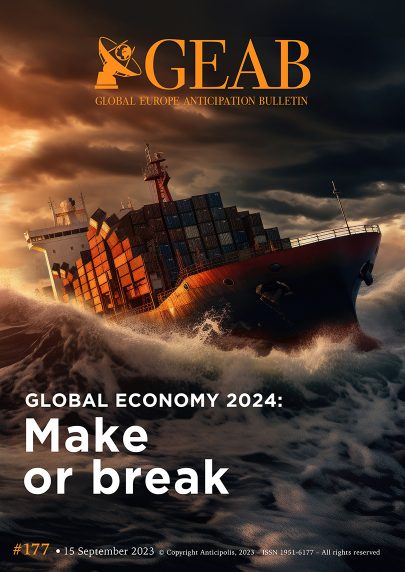GEAB 177
The political landscape of the European Union is undergoing a paradoxical reconfiguration: ideas from the right, and even more so from the far right, are on the rise; yet the traditional conservative right is living out its final hours, at least as an autonomous political force.
This is due to the very strong polarisation of the debate in countries such as France[1], but also in Italy, Germany, Spain and Austria, to name but a few[2]. This polarisation of the debate testifies to the success of the democratic model, but also to its weaknesses. In France, Les Républicains (LR – the historic conservative right-wing party) are in crisis, caught between Horizon, the announced successor to Macronism[3], and the Rassemblement National, which is in the process of being de-demonised and, according to some observers, already normalised[4]. In Austria, the far-right FPÖ is scoring ever higher figures[5], and although it has suffered some setbacks due to corruption scandals[6], it is now the country’s leading political force, forcing the ÖVP to work with it in coalitions if it wants to survive[7]. In Spain, the alliance between the far-right Vox party and the right-wing Partido Popular (PP) is becoming commonplace. After Aragon in August, Murcia became the fifth region in Spain where the far right (Vox) came to power hand in hand with the PP[8]. In Italy, it was also a coalition that triumphed in 2022, propelling Giorgia Meloni to the head of the government formed by the combination of the conservative right-wing party Forza Italia, founded by Silvio Berlusconi (who died in June), and two far-right parties, Matteo Salvini’s League and the Fratelli d’Italia, led by Meloni.
Login

The diplomatic return revealed a clear advantage for the Global South in the concert of nations, marked by the BRICS summit in the first place, announcing an expansion to six [...]
Everyone knows that what doesn't bend, breaks. This is the short-term threat to the European Union's economy. The supranational operation of its institutions is inflexible, and in the international economic [...]
Adrien Hubert works in international cryptocurrency and Web3 circles more generally. He has set up several companies, including Geminy, of which he is CEO. He gives us his views, based [...]
Africa, the last pawn on the global multipolar chessboard Egypt, Ethiopia, South Africa: Africa's BRICS axis is more oriented towards the East, although it should be noted that Addis Ababa, [...]
Cheap oil is history As demonstrated in our economic panorama, oil prices will remain high in the short and medium term, driven mainly by the coordinated action of Russia and [...]

Comments